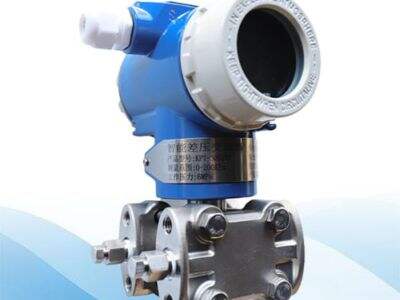Paineetulostajat ovat laitteita, joita käytetään mittaan painetta kaasupitoisessa tai veden täyttämässä tankissa tai putossa. Kuvittele ne kuin pieniä etsijöitä, jotka etsivät ympärillä painetietoja. Nämä työkalut käytetään monilla teollisuudenaloilla, kuten öljyssä, kaasussa, kemikaaleissa ja ruuassa varmistaakseen, että kaikki toimii turvallisesti ja sujuvasti. Me tarvitsemme näitä työkaluja, koska ne varmistavat, että prosessit suoritetaan oikein. Ne muuntavat paineen sähköiseksi signaaliksi, jonka koneet voivat helposti lukea. Tämä mahdollistaa ihmisten seurauksen ja hallinnan erilaisia prosesseja. Nämä Paine mittarit viestivät hälytyksien, venttiilien ja muiden yksiköiden kanssa. Tämä yhteys mahdollistaa ajantasaisen palautteen ja tekee sen helpommaksi hallita painetta ja toimia turvallisesti erilaisissa olosuhteissa.
Kuinka Paineetulostajat Toimivat Oikein?
Jotta paineennustin toimisi oikein, meidän täytyy ottaa huomioon, miten se on rakennettu, missä se sijaitsee ja miten sitä käytetään. Tarkalleen ottaen, miten se mittaa painetta, määräytyy erilaisista tekijöistä. Yksi tärkeimmistä ominaisuuksista on, millainen aistintansa on. Sen täytyy tasapainottaa kohtaamaansa painetta eikä rikkiä tai menettää lukemiskykyään. painelähettäjäsensori se tulisi mittaa oikeaa painetta tarkasti ilman että ylittää huippupaineen raja-arvoa.
Paineennustimen voimanmittoalue, jonka se voi muuntaa, on myös erittäin tärkeä. Se pitäisi olla laajena tarpeeksi ottaakseen huomioon kaikki eri paineet, joita se kohtaa, mutta ei niin korkeana, että se aiheuttaa vaaraa. Sinun pitäisi myös varmistaa, että resoluutio (vähimmäisero paineen välillä, jonka ennustin voi havaita) on herkkä tarpeeksi havaitakseen jopa pienet muutokset. Mutta se ei saa olla niin herkkä, että se hämmentyy pienistä häiriöistä tai merkityksettömistä muutoksista.
Muut toimintalogiikat liittyvät lämpötilakorjaukseen, joka auttaa korjaamaan seuraamuksen siitä, että lämpötilan muutokset voivat aiheuttaa myös paineen muutoksia. Tämä on ratkaisevan tärkeää ilmastoissa, joissa on merkittäviä lämpötilan vaihteluja. Lopuksi paineennostin tulisi olla nopeasti-toimiva havaitakseen nopeat painemuutokset. Se ei kuitenkaan saa olla niin nopea, että se tekee virheitä tai ylittää oikean mittauksen.
Tarkkojen Mittausten Ylläpitäminen
Kun kyseessä on paineen kanssa työskentely, oikean mittauksen tekeminen on elintärkeää. Pienenkin painemuutos voi johtaa suuriin virtausnopeuden tai turvallisuuden muutoksiin. Esimerkiksi monimutkainen virhe painelukujen osalta voi johtaa vakaviin turvallisuusongelmiin. Kaiken tarkkuuden säilyttämiseksi meidän täytyy päivittää paineindikaattori lähettäjä itse säännöllisesti käyttämällä erityistoimistesi mukaisesti merkittävissä kansallisissa tai kansainvälisissä standardeissa. Säännöllinen kalibrointi varmistaa, että laitteet toimivat oikein ja antavat tarkkoja lukemia.
On myös hyvä pitää lähettimellä etäällä mitä tahansa, mikä voisi häiritä sitä, kuten värinät tai lämpö. Jos lähettimen on olemassa alueella, jossa on merkittävää toimintaa tai lämpötilan vaihtelu, se voi antaa erilaisia lukemia. Paineenlähettimen asentaminen samalla tasolla kuin se piste, jonka meidän täytyy mitata ideaalisesti ei liian kauas, ei liian lähellä paineen lähdettä. Lähettimen sijoittaminen auttaa estämään mittaukset ollessa epäjohdonmukaisia tai luottamattomia.
Paineen tason valvonta
Paineensiintenien hyvä puoli on se, että ne auttavat ylläpitämään järjestelmän painetta. Näin ollen ne voivat välittää signaaleja ventteille tai pompeille, jotka säätävät kaasun tai nesteen virtaa mukauttamme suosituksiin parametreihin. Tämä palautusohjaus on erittäin tehokas, koska se takaa, että paine pysyy turvallisessa alueessa. Vakion paineen ylläpitäminen tällä tavalla on todella tärkeää, erityisesti ruuan ja juomien valmistuksessa, missä tarkkuus on erittäin tärkeää.
Katsotaan esimerkiksi pullointiriviä, jossa juomat täytetään pulmiin; siellä käytetään paineensiinteniä hiilidioksidin tai typpigasen valvonnassa. Se kykenee havaitsemaan tankin paineen ja säätämään virtaa sen mukaan. Tämä estää puhallusten muodostumisen, mikä voisi muuttaa juoman ulkonäköä, maista ja jopa sen hyllyeliniä. Siksi valmistajilla on tasapaino, jonka he tarvitsevat pitää yllä varmistaakseen hyvän laadun, mikä lopulta johtaa asiakastyytymykseen.
Paineensiintenien kalibrointi
Kalibrointi tarkoittaa, että varmistamme paineennäyttimen toimivan oikein vertaamalla sitä asetettuun standardiin. Tämän saavuttamiseksi on useita erilaisia keinoja riippuen siitä, kuinka tarkka mittaus tarvitaan, lähetimen monimutkaisuudesta ja helposta pääsyystä. On olemassa useita tapoja kalibroida paineennäyttimet erilaisten erikoisvälineiden, kuten painopainojen testereiden, paineyhtäläisten, viitepainevoittojen ja automatisoiden kalibrointivälineiden avulla.
Nämä välineet käyttävät tunnettuja voimia lähetimelle ja seuraavat, miten se reagoi. Vastauksen vertailu odotetun arvon kanssa auttaa meitä tarkistamaan, toimivatko lähetin ja vastausjärjestelmä normaalisti vai tarvitseeko se muutoksia. Mittaustulosten tarkkuuden tarkistamiseksi on elintärkeää käyttää luotettavia kalibrointityökaluja.
Paine mittari laitteet WEIBAO -brändiltä ovat keskeisiä laitteita, jotka käytetään laajasti monella teollisuuden alalla, mukaan lukien öljy- ja kaasuala sekä ruoka- ja juomateollisuus. Ne varmistavat myös tarkkan ja luotettavan paineen mitannon, mikä on ratkaisevaa turvallisuuden ja laadun kannalta. Meidän tulisi tietää, miten nämä laitteet toimivat, niiden toimintamekanismi sekä kuinka ne ylläpidetään antamaan tarkkoja mittoja, johdonmukaisen painetasoon näissä laitteissa sekä säännöllinen kalibrointi, jotta ne voivat suorittaa tehtävänsä tehokkaasti. Tämän työn kautta voimme luottaa siihen, että paine mittarit jatkavat helpottamista elämäämme lukemattomissa sovelluksissa.
 EN
EN
 AR
AR BG
BG HR
HR CS
CS DA
DA NL
NL FI
FI FR
FR DE
DE EL
EL HI
HI IT
IT KO
KO NO
NO PL
PL PT
PT RO
RO RU
RU ES
ES SV
SV CA
CA TL
TL ID
ID LT
LT SR
SR VI
VI HU
HU TH
TH TR
TR MS
MS GA
GA BE
BE MK
MK BN
BN LO
LO LA
LA MN
MN NE
NE MY
MY




